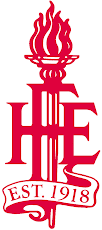One of the things you very rapidly discover when trying to train Fire Investigators abroad is that there are a number of things that affect fire growth, spread, development and behaviour which differemarkedly from country to country. One such item is building construction, the traditional Class B structure is very rare indeed and even the type of "dry lined" and "dry wall" construction is seldom used in the Middle East - at least in those parts I am engaged in. Here in Iran the "state of the art" for light weight construction is to use PU Foam panels as curtain walls and internal divisions. It gets a layer of cement applied to both sides over a heavy metal mesh and then is faced with either a thicker layer of gypsum plaster or dressed with polished decorative stone panels, cemented and grouted in place. And they go up to more than twelve storeys with it.

Fire loads are also different, in that much of the furnishing one encounters is not foam filled, or contains very little. Certainly in the poorer quarters uphosltery tends to be done with traditional materials and a lot of natural fibre is used. One of the more amusing, from our perspective, problems has been in fitting out our real fire scenarios for the students - the curtain materials we have been supplied with don't burn. They melt, they char, the fall down - but no burn! So there are parallels, and there are some fairly interesting differences in how things behave and how the structures respond.
Another interesting matter is the electrical system. It is a hybrid in that the main system is Three Phase Three Wire with Earth Neutral. But now some parts are Four Wire and some new buildings are Four Wire, but supplied by a Three Wire supply. I shall leave it to you, the reader, to figure out what this means in terms of safety systems.
Some of the older buildings are built, managed and occupied on "traditional" lines. Fires in these areas tend to be dramatic, large and probably lethal, though we haven't as yet, been told of any. The picture below gives some idea of the Old Bazaar, Fire Safety Officers are advised to view with caution. Just in case you wondered, it covers 460 hectares....

The picture was taken on a quiet day, normally this is heaving with people, barrows and even motorcycles. And this is one of the better areas. It has certainly been an interesting experience for us and a rewarding one. The students are eager and despite the language difficulties and the problems of trying to ensure that the translation is accurate, the message does seem to be getting across successfully.



